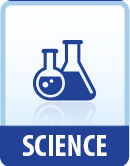|
This section contains 541 words (approx. 2 pages at 300 words per page) |

|
The term "alkyl" refers to a functional group (or substituent) that is derived from the alkanes by the removal of a hydrogen atom. The name of the particular alkyl group is taken from the stem name of the alkane, with the -ane being replaced with -yl. For example, the derived alkyl group from methane is the methyl group. Methane has the chemical formula CH4 and the methyl group is CH3. The first four alkyl groups are methyl, ethyl, propyl, and butyl, with the number of carbon atoms being one, two, three, and four respectively. Isomers are possible with an alkyl just as with the alkane parent, so, for example, isopropyl exists as well as propyl. The isopropyl group [(H3C)2HC-] has a different point (carbon atom) of attachment than the propyl group (H3CH2CH2C-). The symbol often used to denote an alkyl group...
|
This section contains 541 words (approx. 2 pages at 300 words per page) |

|


